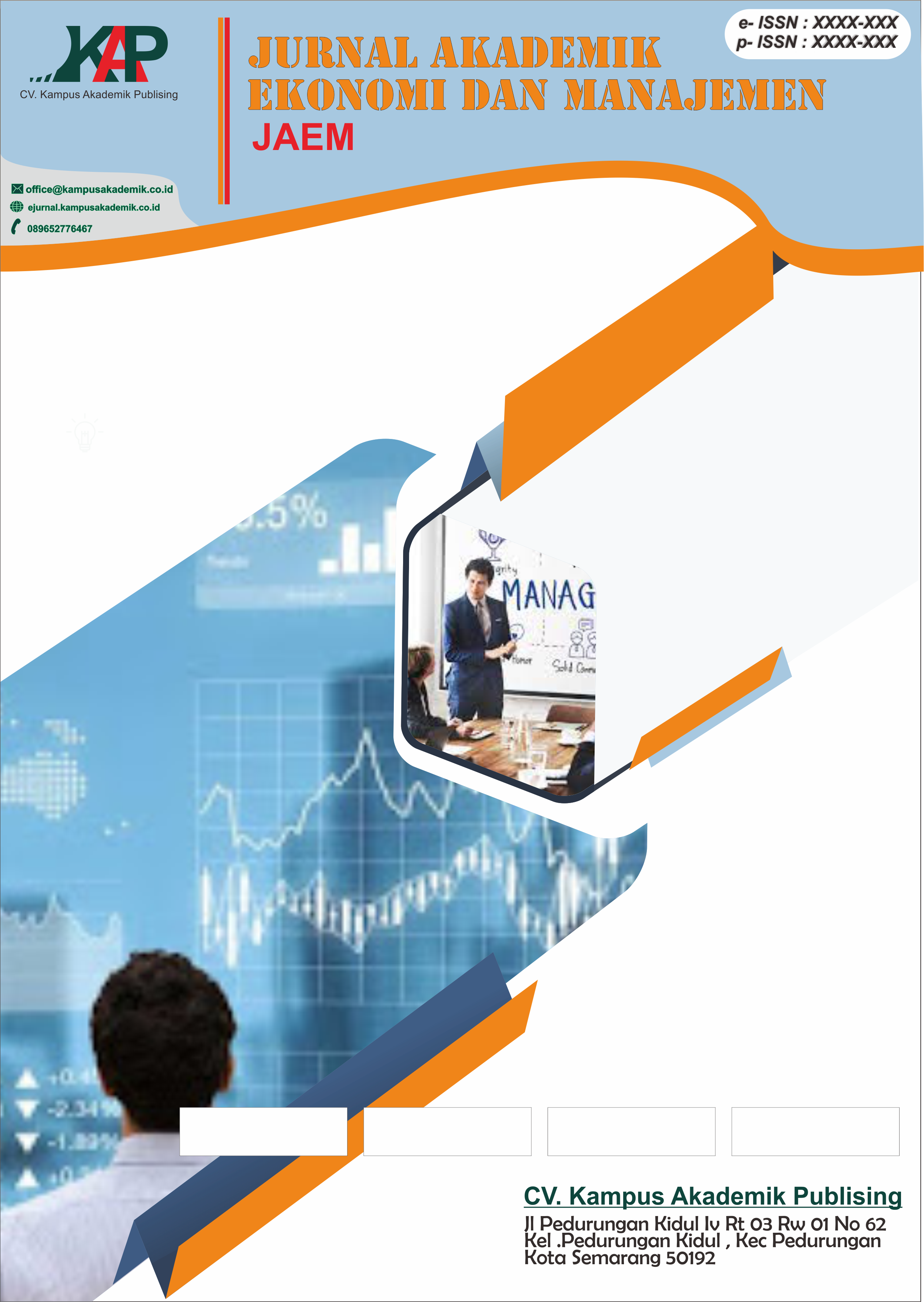Keseimbangan pasar: Analisis Ekonomi Mikro dalam Menentukan Harga dan Kuantitas Optimum
DOI:
https://doi.org/10.61722/jaem.v1i4.3457Abstract
Market equilibrium is a fundamental concept in microeconomics that represents a condition where the quantity of goods or services demanded by consumers matches the quantity supplied by producers at a specific price level. This equilibrium occurs at the equilibrium price, reflecting a state where the market faces no pressure to change prices due to the absence of surplus or shortage of goods. This study explains the mechanism of equilibrium formation, the factors influencing it, and the impact of market imbalances, including conditions of excess demand and excess supply, which often compel the market to adapt to price changes. The study highlights that market equilibrium is not a static condition but a dynamic process reflecting the market's response to changes in the economic environment. A deep understanding of market equilibrium is crucial not only for academics but also for policymakers and business practitioners in achieving effective economic stability. The research concludes with a discussion on how markets can return to equilibrium after disturbances and the implications for resource allocation.
References
Adinugroho, S. (2019). Dasar-Dasar Ekonomi Mikro. Jakarta: Erlangga.
Andriani, W. (2023). Comprehensive Budget Model as a Business Planning Tool. International Journal of Global Accounting, Management, Education, and Entrepreneurship (IJGAME2), 4(1), 95–102. https://doi.org/10.48024/ijgame2.v1i1.12
Andriani, W., Surya, F., & Zahara, Z. (2024). Menilai Kinerja Keuangan Perbankan Syariah di Bursa Efek Indonesia: Pendekatan Analisis Rasio dan Common Size. ISTIKHLAF: Jurnal Ekonomi, Perbankan Dan Manajemen Syariah, 6(2), 17–33. https://doi.org/10.51311/istikhlaf.v6i2.653
Aprila, D., Andriani, W., & Ananto, R. P. (2023). Financial Management of Nagari Owned Enterprises (BUMNAG) and Its Impact on Community Welfare. Jurnal Akuntansi Bisnis, 16(2), 210–225. https://doi.org/10.30813/jab.v16 i2.4461
Basri, F. (2018). Mikroekonomi untuk Manajemen dan Kebijakan Publik. Jakarta: PT RajaGrafindo Persada.
Fattach, A. (2017). Teori Permintaan dan Penawaran dalam Ekonomi Islam. Jurnal Penelitian Ilmu Manajamen, 451-460.
Kustiawati, D., Akbar, N. M., Hartono, N. C., & Sena, L. A. (2023). Keseimbangan Pasar dan Peran Negara Dalam Sistem Ekonomi Islam Menurut Alquran dan Hadits. Jurnal Ekonomi-Teknik, 60-65.
Maulidan, M. I., Badruzzaman, F. H., & Harahap, E. (2020). Analisis Harga Keseimbangan Pasar Pada Ttitk Koordinat. Jurnal Matematika, 1-6.
Nofita, R. ., Siskawati, E., Andriani, W. ., & Ansar, M. . (2024). Green Accounting and Organization Performance: Science Mapping of Present and Future Trends. JASF: Journal of Accounting and Strategic Finance, 7(1), 62–81. https://doi.org/10.33005/jasf.v7i1.475
Purnama, N. I. (2020). Pengaruh Pajak dan Subsidi terhadap Keseimbangan Pasar. Jurnal Ekonomi, 32-37.
Utami, G. F., & Kurniati, E. (2022). Analisis Efek Pergeseran Kurva Penawaran terhadap Keseimbangan Pasar dalam Shortrun pada Pasar Sempurna. Jurnal Riset Matematika (JRM), 93-100.
Samuelson, Paul A., & Nordhaus, William D. (2021). Economics. McGraw-Hill Education.
Setyowati, M. (2018). Ekonomi Mikro: Teori dan Aplikasi. Bandung: Alfabeta.
Sukirno, S. (2020). Ekonomi Mikro: Teori Pengantar. Jakarta: PT RajaGrafindo Persada.
Surapranata, R. S. (2015). Pasar dan Harga dalam Ekonomi Mikro. Bandung: Alfabeta.













